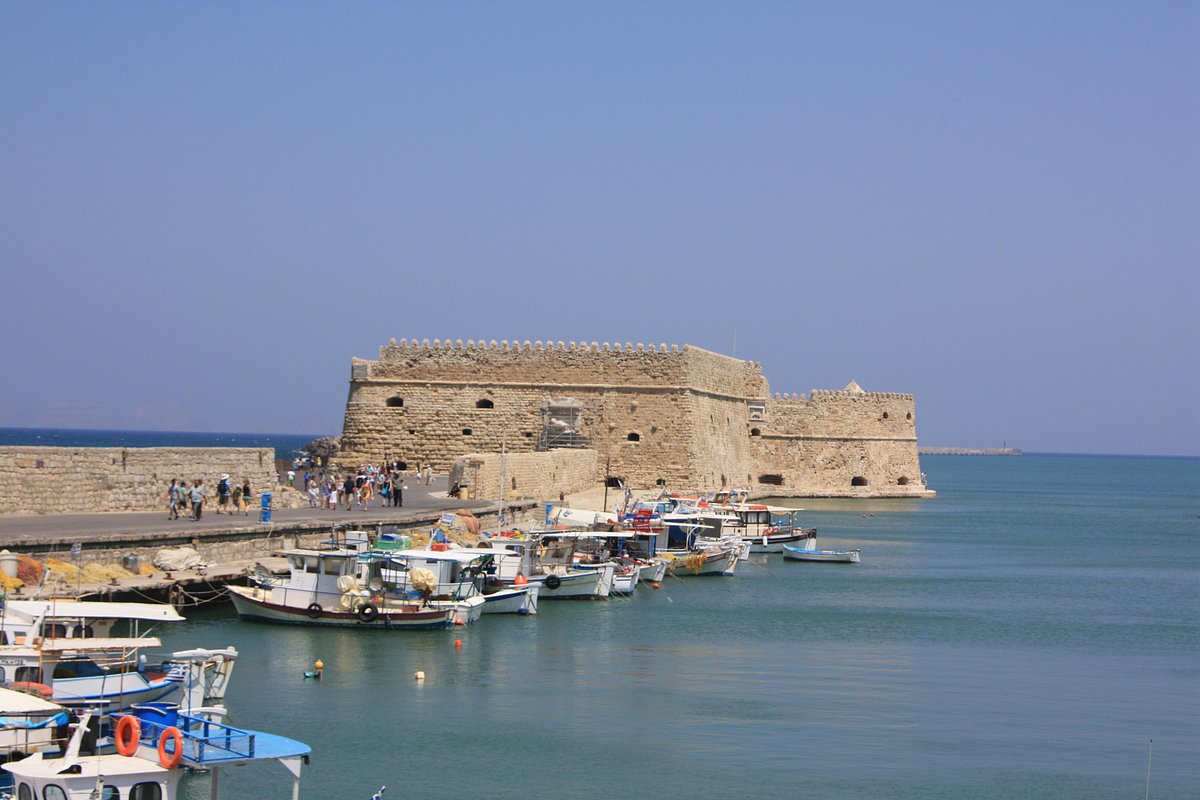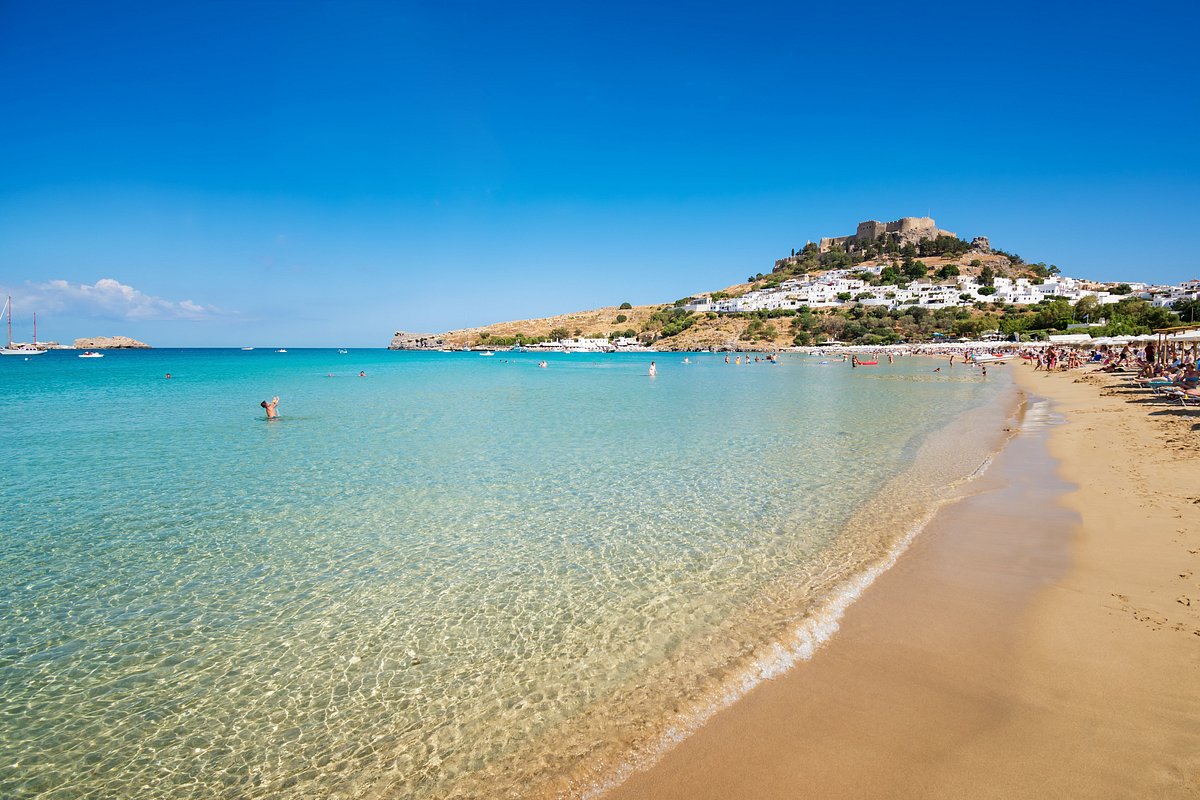Looking for a warm escape from the chilly winter weather? Look no further than the Greek Islands! While many may think of Greece as a summer destination, there are several islands that offer pleasant temperatures and sunny skies even in January.
Crete is one of the best Greek Islands to visit in January. As Greece’s largest and southernmost island, Crete enjoys mild temperatures in the winter months. Chania, in particular, is a charming town with a picturesque harbour and plenty of cafes and restaurants to enjoy. Visitors can also explore the island’s ancient ruins and stunning natural landscapes, including the Samaria Gorge.
Another great option is Corfu, which boasts a mild Mediterranean climate even in the winter months. Visitors can explore the island’s historic old town, relax on the beaches, or take a stroll through the lush countryside. And of course, no trip to Corfu would be complete without sampling some of the island’s delicious cuisine, including fresh seafood and traditional Greek dishes.
Best Greek Islands to Visit in January
If you are planning a trip to Greece in January, it’s important to choose the right island to visit. While some islands may be too cold or rainy during this month, others offer mild temperatures and plenty of activities to enjoy. Here are some of the best Greek islands to visit in January:
Santorini

Santorini is one of the most popular Greek islands, known for its stunning views, picturesque villages, and beautiful beaches. While January is not the peak tourist season, the island still offers plenty to see and do.
One of the main attractions in January is the Santorini Arts Factory, which hosts a variety of cultural events and performances. You can also explore the island’s many museums and galleries, or take a hike along the scenic trails. The temperatures in Santorini in January range from 10-16°C (50-61°F), so make sure to pack warm clothes.
Crete

Crete is Greece’s largest island and offers a range of activities for visitors in January. The island’s main cities, Heraklion and Chania, are home to many museums, historical sites, and art galleries. You can also take a scenic drive through the island’s countryside or hike along the Samaria Gorge.
The temperatures in Crete in January are often quite mild, ranging from 10-16°C (50-61°F). While the ocean waters may be too cold to swim, you can still enjoy the island’s beautiful beaches and stunning scenery.
Rhodes

Rhodes is another popular Greek island that offers plenty of activities in January. The island is home to many historical sites, including the medieval Old Town of Rhodes, the Palace of the Grand Master of the Knights of Rhodes, and the ancient city of Lindos.
You can also explore the island’s many museums and art galleries, or take a scenic drive through the countryside. The temperatures in Rhodes in January range from 9-15°C (48-59°F), so make sure to pack warm clothes.
Overall, these three islands offer a range of activities and mild temperatures in January, making them some of the best Greek islands to visit during this month.
Activities to Do in the Greek Islands in January
Visiting the Greek Islands in January might not be the most popular time of the year, but it can offer a unique and peaceful experience. The winter season in Greece is mild, and the temperatures in the islands are generally warmer than in the mainland. Here are some activities to do during your visit to the Greek Islands in January:
Explore the Island’s Culture and History
January is an excellent time to explore the cultural and historical sites of the Greek Islands. You can visit the ancient ruins and museums without the crowds of tourists that usually flock to these places during the peak season. The Acropolis in Athens is one of the most famous sites to visit, and it is free of charge during the winter months. Other notable sites include the Palace of Knossos in Crete and the Archaeological Museum of Rhodes.
Enjoy the Natural Beauty of the Islands
The Greek Islands are known for their stunning natural beauty, and January is an excellent time to appreciate it. The landscapes are lush and green, and the sea is crystal clear. You can go hiking in the mountains, take a stroll through the olive groves, or explore the secluded beaches. Some of the best islands for outdoor activities are Crete, Corfu, and Zakynthos.
Indulge in the Local Cuisine
Greek cuisine is famous worldwide for its delicious and healthy dishes. January is an excellent time to indulge in the local cuisine, as many restaurants offer discounted prices during the off-season. You can try traditional dishes like moussaka, souvlaki, and Greek salad. Don’t forget to taste the local wine and olive oil, which are some of the best in the world.
Attend Local Festivals and Events
The Greek Islands have a rich cultural heritage, and there are many festivals and events held throughout the year. January is no exception, and you can attend some unique celebrations during your visit. For example, the Feast of Agios Titos is celebrated in Crete on January 25th, and it is a significant religious festival. Another popular event is the Carnival of Patras, which takes place in February but has events in January as well.
In conclusion, visiting the Greek Islands in January might not be the most popular time of the year, but it can offer a unique and peaceful experience. There are plenty of activities to do, from exploring the cultural and historical sites to enjoying the natural beauty of the islands, indulging in the local cuisine, and attending local festivals and events.
Weather in the Greek Islands in January
January is one of the coldest months in Greece, and the Greek Islands are no exception. The weather can be quite unpredictable, with occasional rains and strong winds. The average temperature during the day ranges from 10°C to 15°C, and it can drop to 5°C at night.
If you’re planning to visit the Greek Islands in January, it’s essential to pack warm clothing, including a windproof and waterproof jacket. You should also bring comfortable shoes for walking on slippery or wet surfaces.
The weather in the Greek Islands in January varies depending on the location. The Cyclades and Dodecanese islands are relatively drier than the Ionian islands, west Peloponnese, and Crete. The table below shows the average temperature and rainfall for some of the popular Greek Islands in January.
| Island | Average Temperature (°C) | Average Rainfall (mm) |
|---|---|---|
| Santorini | 13 | 67 |
| Mykonos | 11 | 63 |
| Crete | 14 | 98 |
| Rhodes | 14 | 168 |
Despite the cold weather and occasional rainfall, visiting the Greek Islands in January has its advantages. The crowds are much thinner, and you can enjoy the beauty of the islands without the hustle and bustle of tourists. Also, the prices are much lower than during the peak season, making it an affordable time to visit.
In conclusion, the weather in the Greek Islands in January is cold and unpredictable, but with proper planning and packing, you can still enjoy your visit. The thinner crowds and lower prices make it an excellent time to explore the islands’ beauty without the peak season’s hustle and bustle.
Getting to the Greek Islands in January

If you’re planning to visit the Greek Islands in January, it’s important to note that the tourist season is over, and travel options may be more limited than during the peak season. However, there are still a few ways to get to the islands.
By Air
Most of the Greek Islands have their own airports, but only a few of them have direct flights in January. Athens International Airport is the main hub for international flights to Greece, and from there, you can take a domestic flight to one of the islands. Some popular islands with direct flights from Athens in January include Crete, Santorini, and Mykonos.
By Ferry
Ferries are a popular way to travel between the Greek Islands, but in January, schedules are often reduced, and some routes may be cancelled due to bad weather conditions. However, some ferry companies still operate during the winter months, and you can check their schedules and book tickets online.
By Car
If you’re planning to explore more than one island, renting a car might be a good option. However, keep in mind that driving conditions in January can be challenging due to rain, snow, and icy roads. You should also check if the car rental company allows you to take the car on ferries between islands.
By Bus
If you’re on a budget, taking a bus might be a good option. Most of the Greek Islands have regular bus services, but again, schedules might be reduced in January. You can check the timetables and buy tickets at the local bus stations.
Overall, getting to the Greek Islands in January might require a bit more planning and flexibility than during the peak season, but it’s still possible to explore some of the most beautiful islands in Greece.
Accommodation Options in the Greek Islands in January

If you’re planning a trip to the Greek Islands in January, it’s important to note that many hotels, resorts, and tavernas close down for the season. However, there are still plenty of accommodation options available for those who want to experience the beauty and culture of the islands during the winter months.
One option is to stay in a traditional Greek guesthouse or bed and breakfast. These small, family-run establishments offer a more authentic experience and are often located in charming villages away from the tourist crowds. Some popular options include the Pension Irene in Naxos, the Pension Eleni in Crete, and the Pension Marianna in Mykonos.
Another option is to rent a private villa or apartment. This can be a great choice for families or groups of friends who want more space and privacy. Many rental properties come equipped with kitchens, so you can save money by cooking your own meals. Some popular rental sites include Airbnb, HomeAway, and VRBO.
If you’re looking for a more luxurious experience, there are still a few high-end hotels open during the winter months. Some of the best options include the Grace Mykonos, the Mystique Santorini, and the Elounda Beach Hotel & Villas in Crete.
It’s important to note that prices for accommodation are generally lower during the winter months, so you can often find great deals on hotels, guesthouses, and rental properties. However, it’s always a good idea to book in advance to ensure that you have a place to stay.
Frequently Asked Questions

Which Greek island is warmest in January?
In January, the warmest Greek islands are Crete, Rhodes, and Corfu. These islands are located in the southern part of Greece and have a milder climate compared to the rest of the country. The average temperature on these islands ranges between 15-20°C, making them a great destination for winter sun seekers.
Which Greek island is best to visit in January?
Crete is considered the best Greek island to visit in January. It has a rich history, picturesque villages, and stunning beaches. The island is also home to several attractions such as the Palace of Knossos, the Samaria Gorge, and the Arkadi Monastery.
What is the hottest Greek island in the winter?
Rhodes is the hottest Greek island in the winter. It has an average temperature of 16°C in January, making it a popular destination for winter sun seekers. The island is also home to several attractions such as the Palace of the Grand Master of the Knights of Rhodes, the Acropolis of Lindos, and the Valley of the Butterflies.
Is January a good time to visit the Greek islands?
January is a good time to visit the Greek islands if you are looking for a winter sun holiday. The islands are less crowded during this time, and the prices are lower compared to the peak season. However, the weather can be unpredictable, and some attractions may be closed.
Can you visit the Greek Islands in January?
Yes, you can visit the Greek islands in January. However, some islands may have limited ferry services, and some attractions may be closed. It is also important to note that the weather can be unpredictable during this time.
Are the Greek islands warm in January?
The Greek islands are not as warm in January as they are during the summer months, but they still have a milder climate compared to the rest of the country. The average temperature on the islands ranges between 15-20°C, making them a great destination for winter sun seekers.

Hailing from the historic city of Thessaloniki, Nikos Tsakiris is a passionate explorer, seasoned writer, and co-founder of Greek Island, the definitive travel blog for the Greek Islands.



